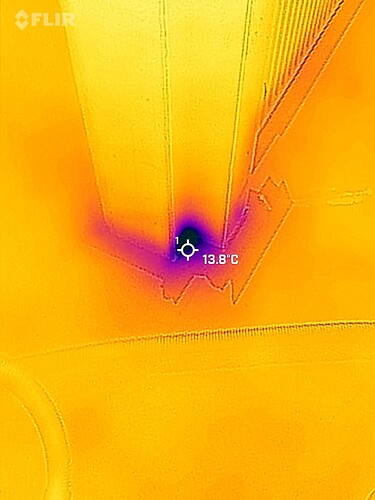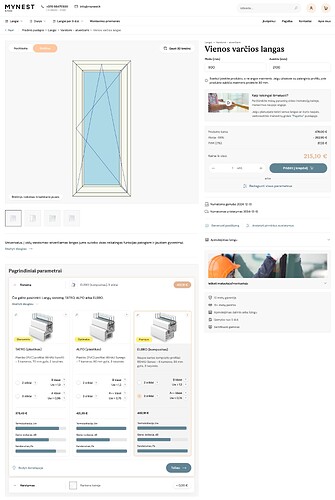I swat the budget constraint notes. Some unsolicited off topic advice from lessons learned by making mistakes:
Splurge on the windows. They’re the weakest link. I regret some life choices in this regard even if at the time of our purchase (peak Biden inflation stimulus in 2021) it was “rubbish windows in 3 months or nothing” I think I would have chosen to wait…
A window with the glass at say 0.7 W/m2K but an overall window U-value of say 1 W/m2K will be sad - in order for the small amount of frame to tank the overall U-value that much the frame will be terrible.
Their U-values are also measured/calculated without any pressure difference. As soon as you get some wind or some stack effect you have a pressure difference and will draw air through the seals. Once air is passing the seals the effective U-value of the window might as well not be there.
The outer seal is for “worst of the rain” not “air”. The first chambers of the profile are for “draining water” and are open to outside air / will be at outside air temperature due to drain holes.
The second seal (and there may only be two in a profile such as Rehau Euro 70) is for the air. If you have a tilt and turn window then the mechanism goes straight through this seal and there is nothing there.
I’m buttoning up our windows/checking for leaks before an airtightness test (was about -2C when photos taken) and you can see what a bad frame looks like:
Glass is at about +17C with air -2C (so glass is not generating any horrible convection currents - not the air leak visible at the top and right tho)
Frame is 13C (so guess where you will get condensation first if the humidity is high enough - I will be using ply for the window reveals not plasterboard and leaving a small gap to the frame
Still finding the odd leak - again something like a screwhole not filled in or a tongue and groove not completely bubble glued is enough to draw cold air in through all the insulation and drop the temperature very locally to the point you’d be neat the dew point.
e.g. If Rehau cheapo UPVC; ignore the Euro70 profile. The Synego 80 is acceptable in terms of U-value / notional airtnightness but has the structural integrity of wet spaghetti. The Geneo 86 is the one to have - same thermal performance but is fibre reinforced so the nothing droops/binds in the larger sizes.
https://www.rehau.com/us-en/geneo-passive-house-certified
RRP for say 900 x 2100 mm tilt/turn with warm edge triple glaze 373 vs 462€ - very little - with actual price say €220. Not. Worth. Skimping. When you can have passive house certified windows for very little.
I would also spluge €30 nominal (€16? after discount) and go with a hidden tilt/turn hinge for (a) keeping it INSIDE the air seal and (b) giving more clearance between the window and the window reveal when it opens.
You may also want to learn how to measure / fit windows yourself. The markups applied by people who are doing door to door sales; to cover their backsides when they order the wrong sizes etc; are pretty damn huge. Possibly the largest you can make in a retrofit and even if you mess up…half the windows…you’ll still save overall and will have an amazing set of windows for the garden shed later lol
https://www.youtube.com/playlist?list=PLlEDeDWZazY2G-T8SZ974gdzeoeQeyMs0
Don’t do low threshold doors. They just don’t seal properly. We don’t need to keep the thresh indoors any more but you still want the water to be kept out…







